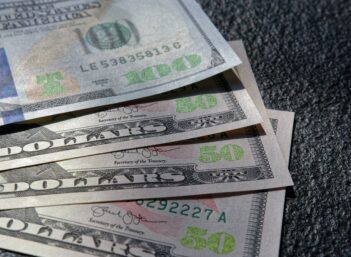According to a recent study, the average US household owes more than $9,000 on their credit cards. Other surveys peg that number closer to $16,000. Ouch.
And that's not the worst of it. The typical cardholder pays an average annual percentage rate (APR) of 15% on that debt. If you have a $16,000 balance on a credit card that asks for you to pay at least 1% of your balance plus interest monthly (that's a minimum payment $360 per month), it would take 32 years (yes, three decades!) to pay off your debt.
Oh, and you'd have paid a whopping $19,479 in interest over that period -- more than what you charged on the card in the first place! You can see how dangerous credit card debt can be if you don't keep it in check.
If your situation looks this bad (or worse) and you're paying 10%-plus interest rates on one or multiple credit cards, know that there are a few ways out. But for them to work, you must be committed to not taking on more debt (cut up your cards if you don't trust yourself), living within your means, and using as much of your extra cash to pay down debt with the goal of becoming financially free.
With those rules in mind, here are three great ways to get out of credit card debt:
1. Pay Off Your Debt With the Debt Snowball Technique
If you have bad credit, your best bet may be to use the 'debt snowball technique.' This strategy involves aggressively paying extra towards the principal on your highest-interest card/loan first while simply paying the minimum payment on the other cards/loans (learn how to do this in 10 Ways to Dig Yourself Out of Credit Card Debt) until the highest-interest card is paid off first. After that one is paid off, it's on to paying extra on the next highest-interest card (and making minimum payments on the others) until you eradicate your debt, card by card.
In about six to 12 months from now, as you continue to make your payments on time and your credit score improves, you will have the power to negotiate a lower APR with the credit card issuer to potentially shatter thousands of dollars in interest charges with one 15-minute phone call.
2. Do a Balance Transfer and Consolidate Your Debt with a 0%-Interest Credit Card
If you have enough income to aggressively pay down your debt, you could consolidate your card balances onto a balance transfer credit card that lets you pay 0% interest for 12 to 21 months. Not only could you avoid paying thousands of dollars in interest charges if you paid your debt down within the 0% financing period, you could also be debt-free in less than two years!
There's just one catch with 0%-intro cards. Some come with balance transfer fees, which can equal up to 3% of your total balance (i.e. that's $300 for every $10,000 of debt you transfer onto the 0% card). So before you jump into one of these, be sure to read about any fees involved and opt for a card that doesn't charge a balance transfer fee.
3. Consolidate Your Credit Card Debt into a Personal Loan
If your credit rating is good or excellent, consolidating your credit card balances into a personal loan (sometimes called a 'debt consolidation loan') may be the smartest idea of all.
For starters, it's not unheard of to find personal loans with fixed APRs as low as 6% -- less than half the rate charged on the average credit card. And unlike variable-rate credit cards that may jack up your minimum payments as interest rates rise, fixed-rate personal loans offer predictable payments and let you pay off your debt in under five years (the typical term of a personal loan is 30 to 60 months). Finally, unlike a home equity loan, there's no collateral involved with a personal loan so you won't risk losing your home or car.
Just remember to read the fine print as personal loans sometimes come with early-payoff penalties or 'interest surcharge' surprises that are triggered when you pay off your loan.
Debt Consolidation Showdown: Personal Loan versus 0%-Intro APR Balance Transfer Credit Cards
In case you're still wondering which strategy may be best for you, let's look through an example of how someone with $16,000 in credit card debt paying a 15% APR would fare by consolidating their debt into a personal loan with a 6% APR (again, this assumes you have great credit).
You can see the comparison in the table below:
| Consolidating $16,000 of Credit Card Debt into a Personal Loan | |||||||||||||||
| |||||||||||||||
* Assumes credit card charges a minimum payment equal to 1% As you can see in the table, consolidating into a low-interest personal loan would save this borrower almost $17,000 in interest and shave an astonishing 26 years off the loan. And the kicker is, their monthly payment would actually shrink by $50 per month. That's what I'd call a life changer! Three More Ideas to Help You Become Debt Free, Fast:1. Free yourself from credit card debt. Learn how to pay 0% on your balances for up to 21 months in The Best Credit Cards for Balance Transfers. 2. Pay off your mortgage to free up an extra $1,000 to $2,000 every month. Check out 3 Ways to Pay Off Your Mortgage 15 Years Early. 3. Shrink and eliminate your car payments. If you're paying 6% APR or more, it's time to know The Top 3 Reasons to Refinance Your Car Loan. |



